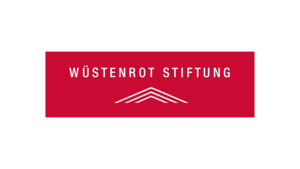Former ballet dancer Terrry Pedersen Pfeiffer (66) teaches dance for older people. A course has already started at the theatre, and from May there will be two weekly classes at the Kraftwerk and the Volkssolidarität Clausstraße. Intensive workshops over several days with Japanese guest choreographers are also planned over the course of the year. The aim is to give people the opportunity to work with professional artists, try out something new, stay active and become visible in the Capital of Culture 2025 programme with small performances. This special movement programme for people over 60 is an initiative by ballet director Sabrina Sadowska at Chemnitz Theatre and the Chemnitz 2025 Generation team, with the Tanz Moderne Tanz festival, Dance Base Yokohama and the Palucca University of Dance Dresden as cooperation partners.
Terrry Pedersen Pfeiffer has been teaching dance for many years. Born in the USA, she studied ballet, contemporary dance and dance pedagogy and has worked at the Kiel Theatre and as a soloist at the Wiesbaden State Theatre, among others. Here she explains what is special about working with older people.
How can we imagine your classes? Do you teach older people to dance?
Terrry Pedersen Pfeiffer: We move together. That's what it's all about. And that means we mobilise our bodies first. We learn how to breathe and stand stably. These are things that are important in our everyday lives. Posture is the basis. That's why I deliberately refer to my courses as lessons, because I want to build on what we've learnt over time. It is also important to me that the participants get to know each other and talk to each other. This social aspect also plays a major role.
What is special about working with older people?
Firstly, that the participants are highly motivated. The physical capabilities of older people are naturally different. I can see that in myself. I've just had a new hip. Some movements may no longer work as well. That's why I will show participants how they can still find ways to perform movements, even if their bodies can no longer do everything perfectly. We will work with classical ballet steps and also incorporate movements from ballroom dance.
Can anyone take part?
Absolutely. There are no prerequisites. All three groups are very mixed. Some have danced before or played football for years. Others have never exercised. We all start together. The course is aimed at people aged 60 and over. In the two-hour lessons, we will repeat movements very often and always work with a slight progression.
Why do you offer dance classes for older people at all?
Because we know from studies that active participation, especially in artistic activities, helps older people stay healthy for longer. The colleagues from the Chemnitz 2025 team have established intensive contacts in Japan. The demographic development that we are now seeing here began in the 1990s. There are many more older people than young people and research has been conducted for some time into how they can grow old healthily and remain active in society. Artistic programmes play a major role in this. This has led to cooperation with several Japanese choreographers who will be coming to Chemnitz for three intensive camps and offering workshops on various techniques and methods. They will also develop a choreography for short performances together with the participants.
As part of Chemnitz 2025, the Generation team is entrusted with the participation of children, young people, young adults and older people and is developing a programme that takes up and combines their perspectives.










































